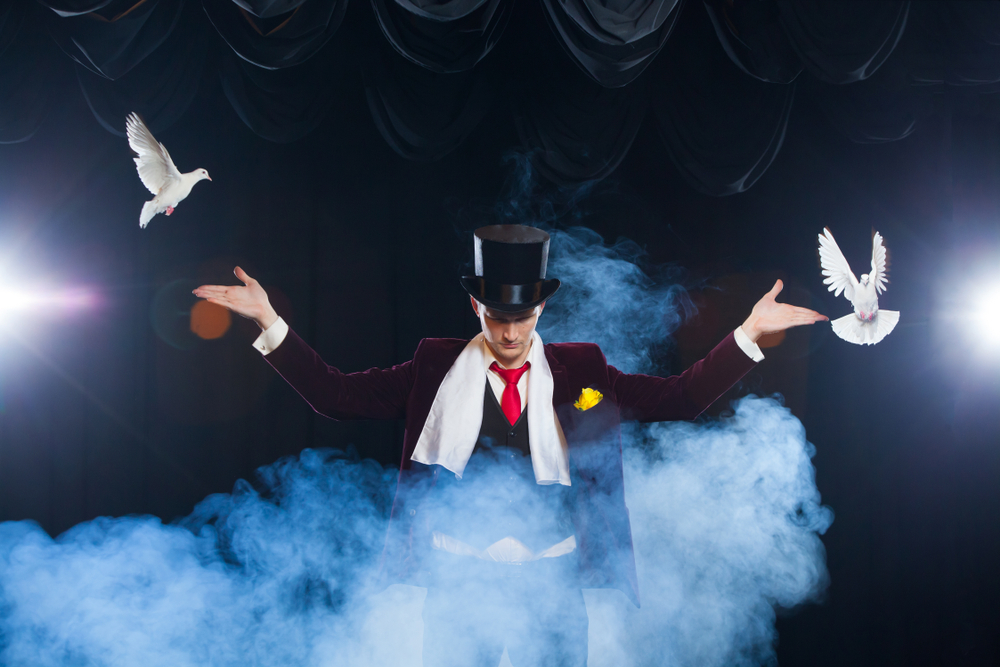Illusionist theater has always been a popular form of entertainment. For centuries, audiences have been mesmerized by the tricks and illusions that magicians perform on stage. From the 1800s until now, illusionist theater has undergone significant changes in terms of both presentation and technology.
The magic and mystery of these performances have evolved to become even more captivating than before. Hamners’ Unbelievable Variety Show looks at the evolution of illusionist theater, exploring how it has developed over time and why it continues to be a beloved form of entertainment today.
Early Days of Illusionist Theater in the Mid-1800s
The mid-1800s marked the birth of illusionist theater. During this era, performers would amaze audiences with their ability to create magical illusions that would leave them questioning their very own eyes. Popular illusionists of the mid-1800s include Jean Eugene Robert-Houdin, considered to be the father of modern magic, opened a theater in Paris in the summer of 1845, using artistic magic and technological machines of the day.
In the 1800s, some audience members were convinced that illusionists possessed supernatural powers. It wasn’t until the 1900s that the true secrets behind the tricks started to become widely known.
The technology used in early illusionist theater was simple yet effective. Performers would use props like cards, ropes, and coins to create mind-boggling illusions. Audiences were often amazed at how they could make an object disappear and reappear right in front of their eyes.
The Golden Age of Illusionist Theater in the early 1900s
The early 1900s was considered the Golden Age of Illusionist Theater. This era saw a rise in the popularity of illusionists who performed large-scale shows and incorporated new technology into their acts.
One of the most well-known illusionists of the early 1900s was Harry Houdini. He captivated audiences with his death-defying stunts, including escaping from a straitjacket while upside down and being submerged in a tank of water. Another notable illusionist was Howard Thurston, who specialized in stage illusions and was known for his extravagant stage sets.
Many of these illusionists would go on tour, traveling across the country by train and performing in theaters. The term “roadshow” was coined to describe these traveling acts. Wherever Houdini went, he drew large crowds but also aspiring magicians who wanted to learn from the master.
New technology was also a big part of the Golden Age of Illusionist Theater. Illusionists began incorporating new lighting techniques and early special effects into their acts. One notable example is Pepper’s Ghost, a technique that uses angled mirrors to create the illusion of ghostly apparitions on stage.
Related Post: 4 Famous Magicians and Their Iconic Illusions
Rise of Modern Illusionist Theater Thanks to TV
Modern illusionist theater rose in popularity thanks to television and residencies in Las Vegas. Acts like Blackstone, David Copperfield, Siegfried & Roy, and Penn & Teller were household names for their stage performances and television specials.
David Copperfield, who became famous for his large-scale illusions and daring feats, set the standard for modern-day illusionists. Copperfield made the Statue of Liberty disappear, walked straight through the Great Wall of China, and even flew across the Grand Canyon. In 2015, Copperfield was awarded a star on the Hollywood Walk of Fame for his contributions to the entertainment industry.
Siegfried & Roy, known for their iconic show featuring white tigers and lions, became the world’s most successful magic act during the 1980s and 1990s. Their popularity skyrocketed after their performances at the Mirage in Las Vegas, where they entertained millions of visitors for more than a decade.
Penn & Teller, famous for their witty humor and unconventional approach to magic, also rose to fame in this time period. They created a unique blend of magic, comedy, and social commentary, often exposing the secrets behind traditional magic tricks.
Illusionists have been able to push the boundaries of what was once thought possible, thanks to advancements in technology. Special effects, lighting, and sound all play a role in creating more immersive and engaging shows. From the use of holograms and augmented reality to 3D projection mapping, modern illusionist theater continues to amaze audiences with its innovation and creativity.
Branson, MO, Illusionists Dave & Denise Hamner
Experience exciting illusions at Hamners’ Unbelievable Variety Theater in Branson. Denise and Dave Hamner welcome you to experience our show four days a week at 8 p.m. We blend modern performance with traditional magic tricks along with amazing acts. We promise everyone who walks into our theater will be amazed!
Purchase tickets to the only magic and variety show in Branson! Contact us or call 417-334-4363 for more information. Are you bringing a group of 15 or more? We have group discounts!


